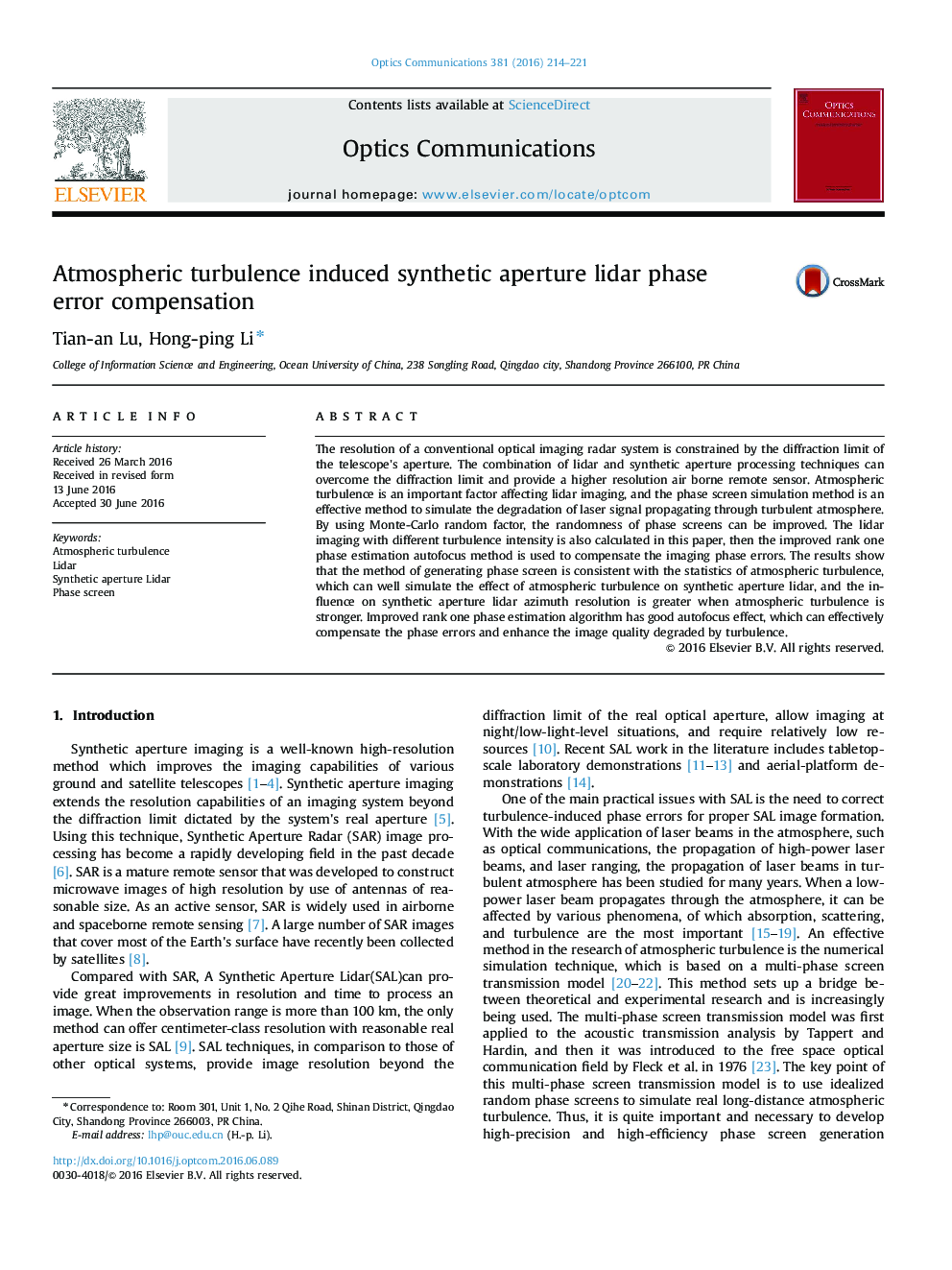| کد مقاله | کد نشریه | سال انتشار | مقاله انگلیسی | نسخه تمام متن |
|---|---|---|---|---|
| 1532991 | 1512542 | 2016 | 8 صفحه PDF | دانلود رایگان |
• The Synthetic Aperture Lidar suffers the atmospheric turbulence effect.
• We use Monte-Carlo random factor to generate Phase screens.
• We use a novel Rank One Phase Error Estimation method to compensate the errors.
• Finally, the compensation effect under different conditions is discussed.
The resolution of a conventional optical imaging radar system is constrained by the diffraction limit of the telescope's aperture. The combination of lidar and synthetic aperture processing techniques can overcome the diffraction limit and provide a higher resolution air borne remote sensor. Atmospheric turbulence is an important factor affecting lidar imaging, and the phase screen simulation method is an effective method to simulate the degradation of laser signal propagating through turbulent atmosphere. By using Monte-Carlo random factor, the randomness of phase screens can be improved. The lidar imaging with different turbulence intensity is also calculated in this paper, then the improved rank one phase estimation autofocus method is used to compensate the imaging phase errors. The results show that the method of generating phase screen is consistent with the statistics of atmospheric turbulence, which can well simulate the effect of atmospheric turbulence on synthetic aperture lidar, and the influence on synthetic aperture lidar azimuth resolution is greater when atmospheric turbulence is stronger. Improved rank one phase estimation algorithm has good autofocus effect, which can effectively compensate the phase errors and enhance the image quality degraded by turbulence.
Journal: Optics Communications - Volume 381, 15 December 2016, Pages 214–221
